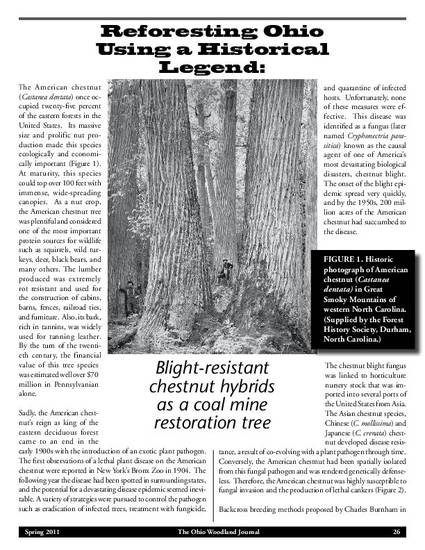
- American chestnut,
- Mine restoration tree,
- Blight-resistant chestnut hybrid
The American chestnut (Castanea dentata) once occupied twenty-five percent of the eastern forests in the United States. Its massive size and prolific nut production made this species ecologically and economically important. At maturity, this species could top over 100 feet with immense, wide-spreading canopies. As a nut crop, the American chestnut tree was plentiful and considered one of the most important protein sources for wildlife such as squirrels, wild turkeys, deer, black bears, and many others. The lumber produced was extremely rot resistant and used for the construction of cabins, barns, fences, railroad ties, and furniture. Also, its bark, rich in tannins, was widely used for tanning leather. By the turn of the twentieth century, the financial value of this tree species was estimated well over $70 million in Pennsylvanian alone.
Available at: http://works.bepress.com/jenise_bauman/6/
